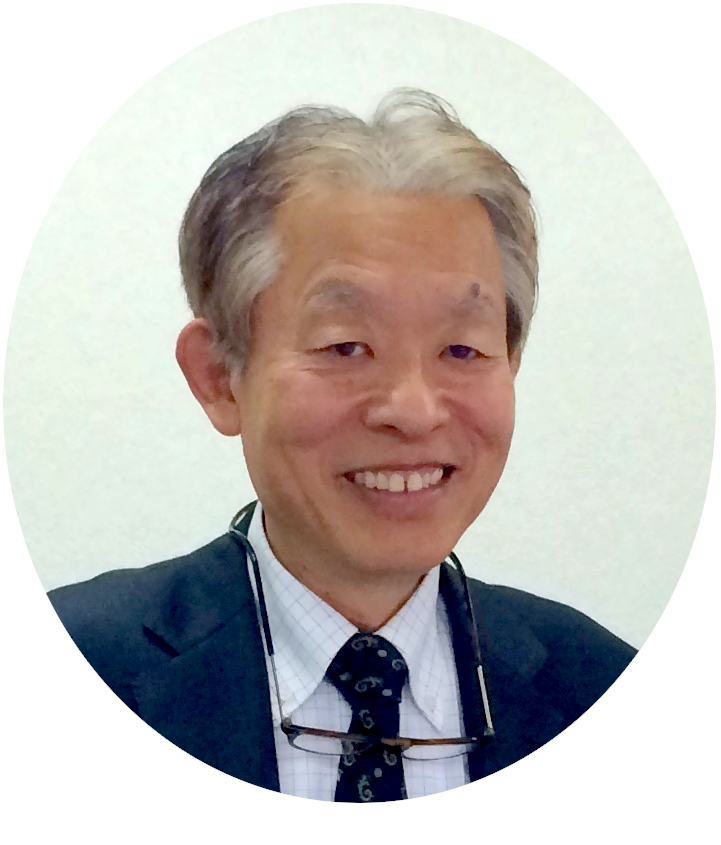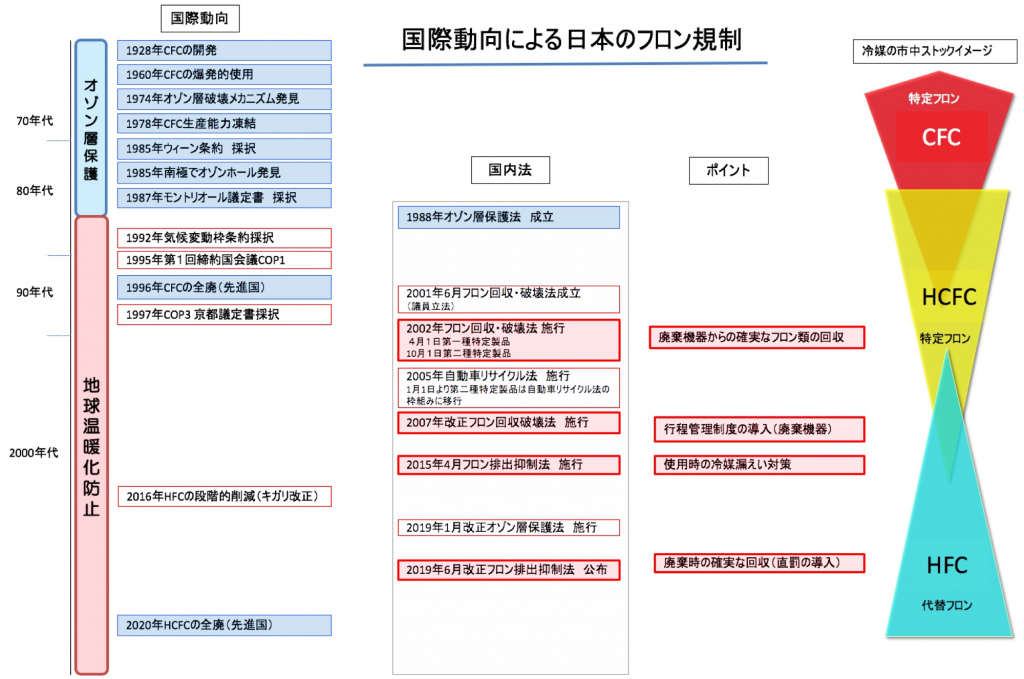
Japan Refrigerant and Environmental Conservation Organization
Managing Director Masato Sakui
One of the greatest inventions of the 20th century, the CFC was invented, released from the toxic refrigerant slated, and the world’s refrigeration and air conditioning equipment has made significant progress. In addition, CFC has been consumed in large quantities in the manufacturing site and the like as a cleaning agent from its characteristics. However, around 1974, Professor Roland first discovered the mechanism of ozone depletion, and in 1987 the Montreal Protocol was adopted to reduce CFC and HCFC, a refrigerant fluorocarbon containing chlorine that destroys the ozone layer. Due to such international trends, the Ozone Layer Protection Act was enacted in Japan in 1988. The CFC will be abolished in 1996 in developed countries, and HCFC will be abolished in 2020 through gradual reductions.
In Japan, HFC, a refrigerant that does not have chlorine that does not destroy the ozone layer, was introduced 10 years earlier than other developed countries in a public-private agreement. The name of this HFC was assumed to be “Alternative Freon” with the wish with the ultimate refrigerant which can escape from environmental regulations.
The IPCC points out that in order to achieve a sustainable society, the rise in global average temperatures should be reduced to less than 2 degrees Celsius since before the Industrial Revolution. In May 1995, the Convention on Climate Change Was agreed in New York, and the first Conference of the Parties (COP1) was held in Berlin in April 1995 to begin the study of global warming countermeasures. Two years later, the 3rd Conference of the Parties (COP3) was held in Kyoto, and the Kyoto Protocol, which is legally binding on greenhouse gas emissions reduction targets, was adopted. The Kyoto Protocol covers six greenhouse gases: carbon dioxide, methane, nitrous oxide(nitrogen oxide), HFC, PFC, and SF6. Therefore, hfc, which was thought to be the ultimate refrigerant, also imposed restrictions on emissioncontrol, and from January 1, 2019, Japan ratified the Kigali Amendment, which imposed production restrictions.
As a domestic law against fluorocarbons, the “Home Appliance Recycling Act” for household air conditioners and refrigerators, the collection of fluorocarbons from waste appliances, and the Automobile Recycling Act for automobiles. In 2002, the “Fluorocarbon Recovery and Destruction Act” was enacted for commercial equipment with a large amount of refrigerant in the equipment, and the Revised Fluorocarbon Emission Control Act, which was amended for the third time, was promulgated in June 2019. The “Fluorocarbon Emission Control Law”, which came into effect in April 2015, focused on leaking refrigerants during use, but this revision aims to ensure the recovery of refrigerants when disposing of equipment. And for the first time in this law, violators were given direct punishment.
One of the reasons for the introduction of direct punishment by this law revision is that people are less interested in leaking fluorocarbons. At a time when the ozone layer was destroyed and the risk of skin cancer and cataracts increased, both the public and companies were interested in leaking refrigerants. However, it might be a part of the reason that a lot of people came to think that “Fluorocarbon” had disappeared from the world after the equipment which used fluorocarbons which called it “Alternative Fluorocarbon” came to be launched afterwards. And even if companies are required to manage alternative fluorocarbons as a warming substance, the reality is that environmental and CSR reports are more interested in reducing CO2 emissions from energy. On the other hand, there is high expectation for the development of next-generation refrigerant, but the refrigeration and air conditioning equipment currently in operation is hfc, while the production of refrigerant is regulated by kigali revision, the refrigerant leakage measures at the time of equipment use and the recovery from the equipment disposal is promoted reliably, It is important to reuse by how the recovered refrigerant is reproduced.

2019.07.23
JRECO Masato Sakui
Biography
- 1979 Joined Mitsubishi Electric Corporation
- 2001 Director of Applied Equipment Manufacturing, Kyoto Corporation, Mitsubishi Electric Corporation
- 2003 Mitsubishi Electric Digital America
- 2006 General Manager, External Affairs, Living Digital Business Division, Mitsubishi Electric Corporation
- 2011 Transferred to The Japan Refrigerant and Environmental Conservation Organization (Managing Director)
- 2014 Mitsubishi Electric Corporation retired
- April 2014 – Japan Refrigerant and Environmental Conservation Organization (Managing Director)
Field of Research
- Environmental Study on Leakage of Fluorocarbon Refrigerant